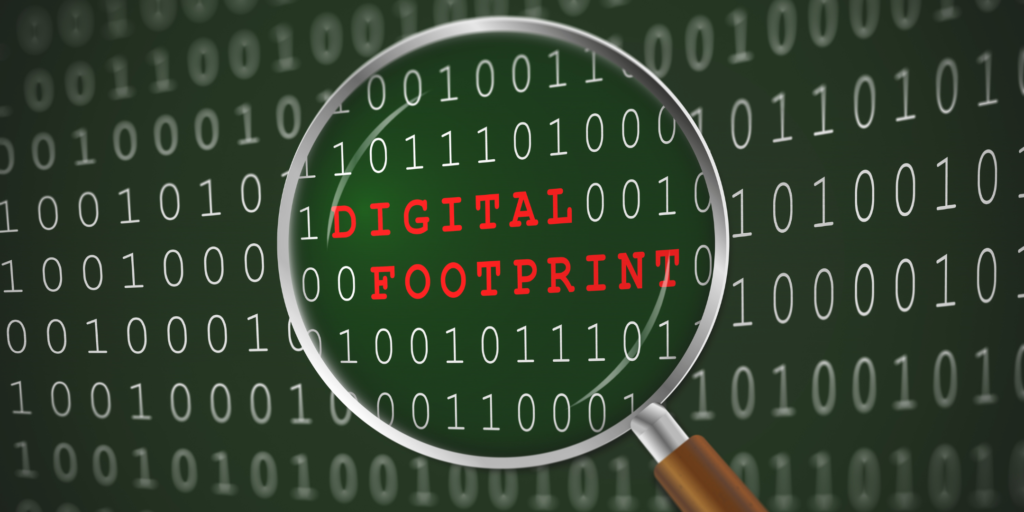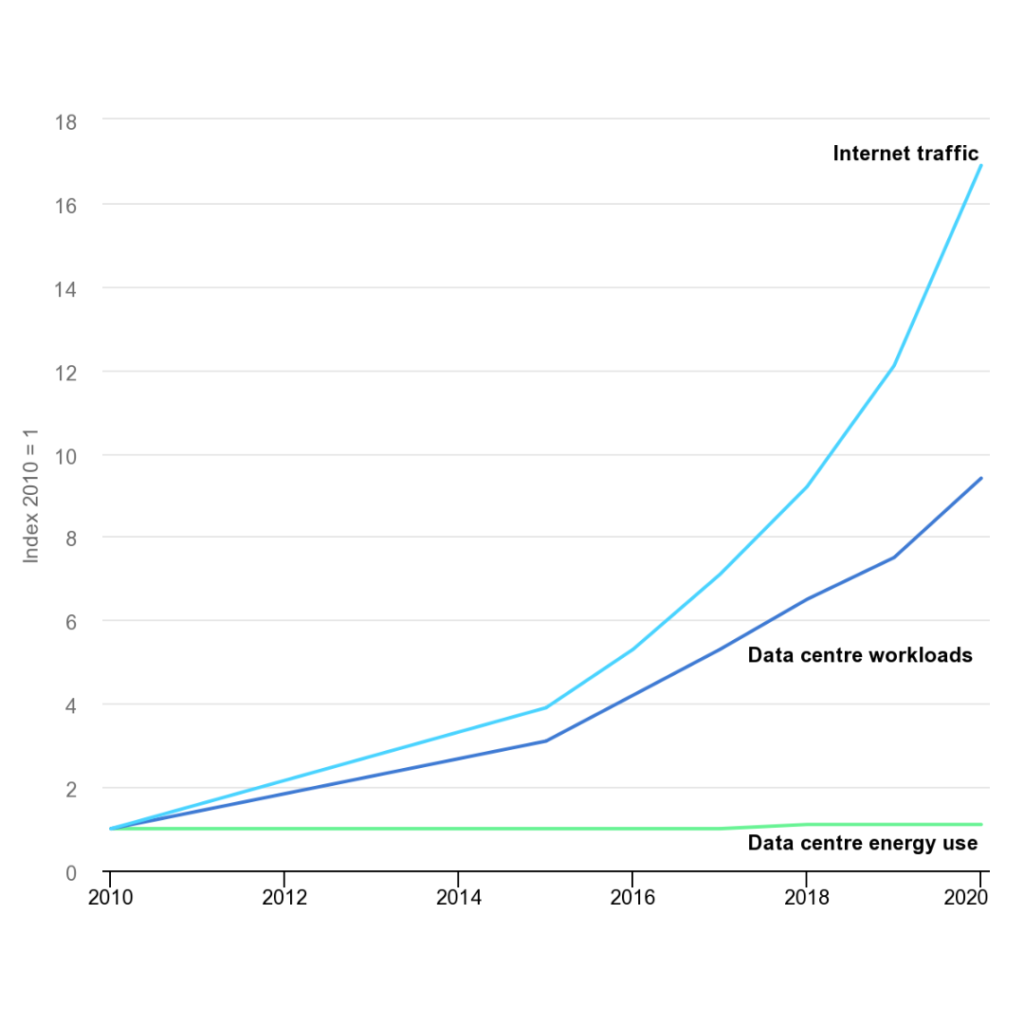What is the digital carbon footprint?

The Covid-19 pandemic has powerfully demonstrated how much of the world’s population – work, private, meetings, and entertainment has transferred to the digital world. Every digital activities – meeting online, emailing, streaming music, and movies, or scrolling social media generate a carbon footprint and can be a cause of global warming. Surprised? Don’t worry, you’re not the only one.
In this article, we’ll focus on:
what the digital carbon footprint is made of
whether an hour of watching videos on Youtube is a lot
What are some ways to reduce our carbon footprint
Here we go!
What is digital carbon footprint in simple terms?
Table of Contents
Every day, while using the Internet at work, at home, at the bank, and while shopping on our digital devices, we generate and download gigantic packets of data. Meta stores data about each of us – every activity, message sent, and post liked. All this data is stored in data centers, which are around the world, needing power and cooling – huge energy resources. Producing this energy takes a significant toll on the environment and generates carbon emissions. This is the digital carbon footprint.
Simply put, it’s the environmental impact associated with internet use, and online activities, measured in the sum of all greenhouse gas emissions (expressed in CO2 equivalent).
So yes, this article generates a carbon footprint too (but you already know it can be offset).
Where does the digital carbon footprint come from?
Hardware – that is what is the most tangible part of the digital carbon footprints. We are talking about smartphones, computers, monitors, printers, modems, routers, or the cables themselves. To produce this equipment requires inputs of electricity and raw materials, which are very often rare earth metals. The environmental cost of electronic equipment is high, as it wears out quickly, ending up in landfills and forcing consumers to buy more. The carbon footprint of equipment includes raw material extraction, manufacturing, transportation, and distribution,
Use of equipment, i.e. electricity needed to charge phones or laptops, or to use routers or modems,
Data transfer – LTE and 5G network transmitters, as well as cable Internet,
Data storage, Data centers – server rooms that store terabytes of data consume huge amounts of electricity.
- AI – using language models or AI support also generates carbon footprint emissions.
What is the world's digital carbon footprint?
There is not much data on the global amount of digital carbon footprint. However, it is easy to conclude that it is significant, as the digital world has a huge energy demand, and this energy contributes 73.2% of global emissions.
According to a comparison made in the publication “Climate protection through digital technologies (2020)” from the Borderstep Institute, emissions from the production, use, and disposal of digital technologies could be between 1.8% – 3.2% of global emissions.

Which social media is the worst for climate change?
Curious about which social media has the biggest environmental impact? Thanks to the calculator provided by Compare the market, users can see what carbon footprint their favorite application generates.
First place – TikTok, emits as much as 2.63 grams of CO2 equivalent per minute of each active user. This means that just five minutes of using this app per day contributes to about 4800 grams of CO2e per year. The number of registered accounts there has already exceeded one billion, so it generates huge carbon emissions.
Second – Reddit generates slightly less – 2.48 grams of CO2e per minute.
Third – Pinterest 1.30 grams of CO2e per minute
Fourth – Instagram 1.05 grams of CO2e per minute
Then – Snapchat 0.87g CO2e/min and Facebook 0.79g CO2e/min
LinkedIn 0.71g CO2e/min
Twitter 0.60g CO2e/min
Twitch 0.55g CO2e/min
and last but not least, YouTube 0.46g CO2e/min
Is streaming on Netflix bad for climate change
If you use a streaming service on your TV for one or two hours a day every year, you use enough electricity to run your fridge for half a year. So, What is Netflix’s carbon footprint? According to Netflix’s estimates, one hour of streaming by one person generates less than 100g of carbon dioxide equivalent (CO2e). The Carbon Trust gives a more accurate calculation and according to them, the European average for each hour of streaming is 55g to 56g of CO2e.
Netflix’s carbon footprint was 1.1 million MT in 2020, equivalent to a city with 150,000 homes.
In line with last year’s announcement, Netflix has obligated itself to reduce emissions and achieve net zero by the end of 2022.

The carbon footprint of ICTs
What is the carbon footprint in ICT? The researchers claim that the actual contribution of ICT to global emissions may be around 2.1-3.9% – although they stress that this calculation is still subject to considerable uncertainty. While comparisons are difficult to make, the numbers suggest that emissions from the ICT sector are greater than those from the aviation industry, which contributes about 2% of global emissions.
Global internet traffic increased by more than 40% in 2020 as a result of growth in streaming, video conferencing, online gaming, and social networking. This growth is the result of increasing demand for digital services over the past decade: since 2010, the number of global internet users has doubled and global internet traffic has increased 15-fold.
Global electricity consumption in data centers in 2020 was 200-250 TWh or about 1% of the global final electricity demand. This does not include energy used for cryptocurrency mining, which was ~100 TWh in 2020.
However, nothing is zero-sum and those working in the ICT industry cannot be criticized, as its positive impact on the climate is also noticeable:
meeting optimization – by meeting online we give up business trips, which reduces our carbon footprint
if it were not for the opportunities offered by our access to knowledge from around the world, it would not be possible to collect climate data, build data models and create predictions and strategies for decarbonization

What is the future of carbon footprint in ICT
This graph inspired us incredibly, why? Well, the International Energy Agency (IEA) has shown how the ICT industry has changed over the last decade. Year after year, network traffic grows, almost exponentially, and the load on data centers and cloud solutions increases, while energy consumption for these purposes remains stable. In a nutshell, we are transferring more data, but electricity consumption is not growing.

Best ways to reduce your digital carbon footprint
- If possible, limit video streaming. Maybe you don’t need to turn on the preview every time you meet? Instead, you can participate in the daily routine in your pajamas with impunity. Consider whether current issues can be discussed over the phone.
- Disable auto play movie playback and limit the number of pop-ups (we love them, don’t we?) by installing a suitable plug-in.
- Regularly clean up your email inbox – delete SPAM and consider every subscription you signed up for.
- Take care of your electronic equipment. Let it serve as long as possible, and repair and replace parts if necessary (according to the right to repair, in force since 2021, the manufacturer must provide replacement parts for equipment up to 10 years after the end of its production).
- Set a sleep mode on your digital devices – you will use less energy and have a full charge battery on your devices longer.
- Search with your head – instead of searching for the same term again, save the page in your bookmarks and use it.
- Limit the time you spend mindlessly scrolling the Internet. Go offline, go for a walk or ride a bike!
How to reduce digital carbon footprint to shape a greener future
The development of the ICT industry is a fact and it cannot be stopped. Every year we will produce more data, which will be stored in bigger clouds that will consume electricity.
However, it is still an industry of hope:
There is a gigantic potential for increasing the efficiency of data transmission, year after year it takes less electricity to transmit a given packet of data
Renewable energy sources are being used to power and cool systems – of course not everywhere, but it’s a matter of time.
The ICT industry can make a significant contribution to actively fighting climate catastrophe. Data analysis and prediction of severe weather events, droughts, and storms will allow us to be better prepared.
Increasing the energy efficiency of the entire power system requires the collection of huge amounts of data, the role of IoT is gigantic here.
Does cryptocurrency have a digital carbon footprint?
Cryptocurrencies are currently huge emitters of digital carbon footprint. A single transaction using cryptocurrencies such as bitcoin is associated with the emission of approx. 402 kg of carbon dioxide. The average household emits the same amount of CO2 for three weeks.

